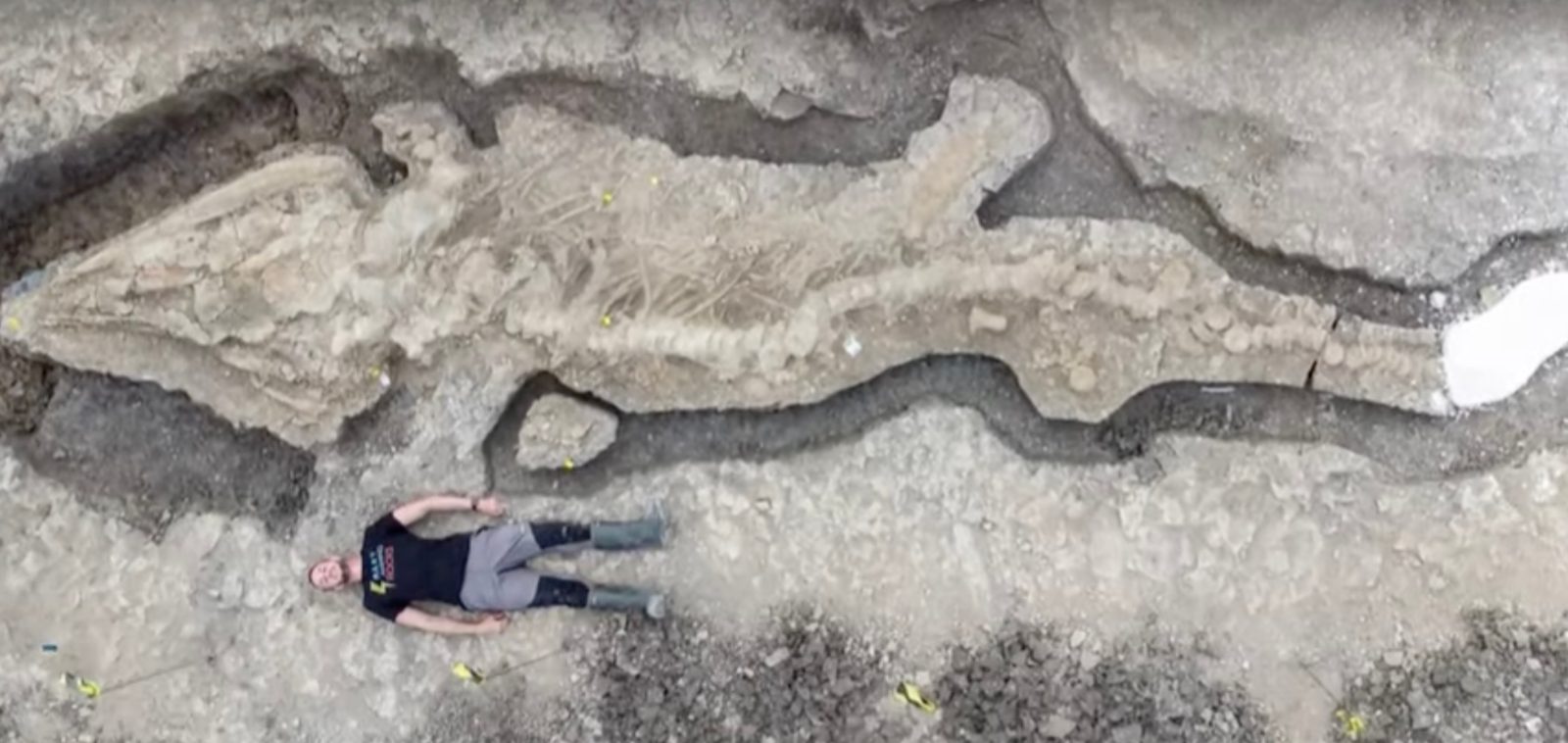
Aerial drone footage has provided viewers a full understanding of just how long – and, in archeological terms, enormous – the fossilized remains of a 180 million-year-old “sea dragon” are on the bottom of the UK reservoir where they were discovered last year.
According to Anglian Water, which owns and operates the Rutland Water Nature Reserve where the discovery was made, the remains represent the largest ichthyosaur ever discovered in Britain, measuring some 10 meters in length. Following a nearly year-long study and excavation effort to unearth the Jurassic-era marine creature, a recent drone shot of Rutland Water Nature Reserve’s conservation team leader, Joe Davis, lying beside his fossilized UK find offered a better understanding of just how big the so-called “sea dragon” was.
Or is, albeit in stonily preserved form about halfway between Birmingham and the sea off England’s east coast that would have been its home.
Ichthyosaurs (or Temnodontosaurus trigonodont for genus sticklers) were warm-blooded, air-breathing marine reptiles that, astonishingly, could vary in size from one to over 25 meters (making the one Davis happened across during a routine drain of the reservoir a rather modest-sized individual, despite its UK record status). Those aquatic predators bore a general resemblance to dolphins, but would have enjoyed a far less endearing reputation, being formidable predators as they were.
They are thought to have appeared on earth 250 million years ago, going extinct roughly 160 million years later. Davis initially thought such a find that far inland would have to be a dinosaur.
“I looked down at what seemed like stones or ridges in the mud and I said this looks a bit organic, a bit different,” Davis told the BBC of his discovery last February. “Then we saw something that looked almost like a jawbone.”
He cautiously poked around before alerting local authorities, who – not having a municipal dinosaur unit at the ready– arranged for trained archeologists to inspect the site. Those UK experts spent nearly a year excavating the ichthyosaur – a species whose shape in fossilized form has earned it the “sea dragon” moniker over time. Completion of that work set up the recent drone shot of Davis splayed out next to his discovery to provide some perspective about its size and historical import.
“The find has been absolutely fascinating and a real career highlight, it’s great to learn so much from the discovery and to think that this amazing creature was once swimming in seas above us, and now once again Rutland Water is a haven for wetland wildlife albeit on a smaller scale,” Davis said.
FTC: We use income earning auto affiliate links. More.


Comments